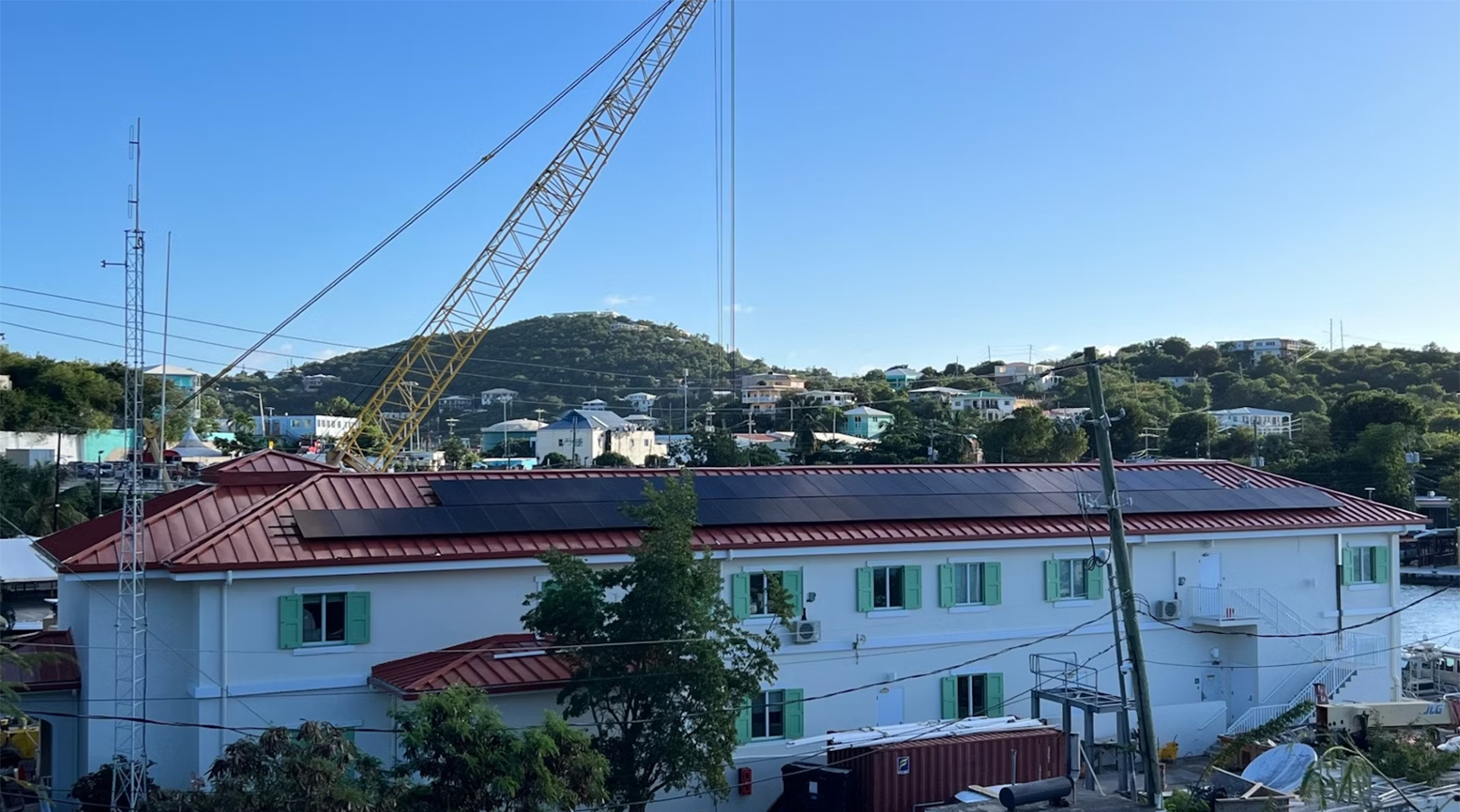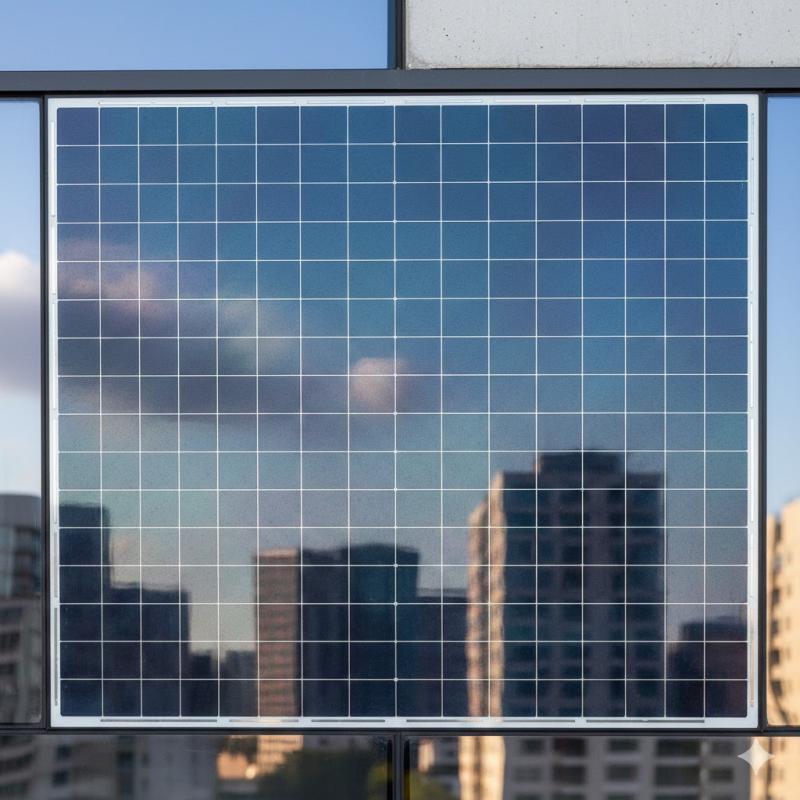Solar Is Becoming A Valued Global Solution To Fight Power Outages – CleanTechnica

Report on the Role of Solar Energy in Advancing Sustainable Development Goals
1.0 Introduction: Solar Power as a Catalyst for Resilience and Sustainability
Recent climate-related events, such as the devastation caused by Hurricane Melissa in Jamaica, underscore the critical need for resilient infrastructure and sustainable energy solutions. The Category 5 storm resulted in widespread, prolonged power outages, heightening public health risks and disrupting communities. This event highlights the contribution of decentralized solar power to achieving several Sustainable Development Goals (SDGs).
In the aftermath of the hurricane, residences equipped with rooftop solar installations demonstrated significant resilience. By providing immediate electricity, these systems supported community recovery efforts and mitigated health risks associated with sanitation system failures, directly contributing to:
- SDG 3 (Good Health and Well-being): By ensuring power for refrigeration and communication, reducing the risk of water- and vector-borne diseases.
- SDG 11 (Sustainable Cities and Communities): By creating resilient household infrastructure capable of withstanding extreme weather events.
- SDG 7 (Affordable and Clean Energy): By providing a reliable, independent power source when the centralized grid fails.
2.0 Enhancing Energy Access and Resilience through Distributed Energy Resources (DERs)
2.1 Case Study: Jamaica’s Rooftop Solar Market
Jamaica’s growing market for rooftop solar exemplifies a strategic shift towards energy independence and climate action, aligning with SDG 7 and SDG 13 (Climate Action). The transition away from expensive, imported fossil fuels towards local, renewable sources offers a model for sustainable development.
- Market Growth: Rooftop solar capacity in Jamaica increased from under 1.4 megawatts in 2015 to nearly 65 megawatts in 2023.
- Infrastructure Resilience: An installer reported that over 300 customer systems sustained only minor damage during the hurricane, proving the durability of the technology.
- Contribution to National Energy Mix: In 2023, renewable sources, including solar, constituted approximately 10% of the nation’s power generation.
2.2 Innovations in Decentralized Solar Technology
The expansion of Distributed Energy Resources (DERs) is democratizing energy access and enhancing grid stability. These small-scale technologies are pivotal for achieving SDG 7 by making clean energy more accessible and affordable.
- Plug-in Solar: Small, self-installed systems that plug into standard household outlets offer an accessible entry point for clean energy, particularly for renters and those unable to install rooftop panels. Projections indicate this technology could reach 60 million Americans by 2035 and is already popular in Germany, with over 500,000 systems installed.
- Solar Generators: Portable systems combining solar panels, batteries, and inverters provide a flexible solution for backup power, furthering energy security and resilience.
3.0 Global Solar Adoption and its Impact on Sustainable Development
3.1 Bridging the Energy Divide: The Global South’s Renewable Transition
The Global South is adopting solar and wind energy at twice the rate of the Global North, a crucial trend for achieving SDG 10 (Reduced Inequalities). By leveraging abundant renewable resources—holding 70% of the world’s potential—these nations can pursue economic development powered by clean, affordable energy, bypassing fossil fuel dependency.
3.2 Country-Specific Progress towards SDG 7
Nations worldwide are integrating solar power to meet climate targets and enhance energy security.
- Global Leaders: In 2024, the Netherlands, Australia, and Germany led in cumulative installed solar power capacity per capita.
- Pakistan: The country imported 17 GW of solar PV and 1.25 GWh of battery packs in 2024. This strategy of combining solar with battery storage is designed to lower energy costs, improve reliability, and strengthen energy sovereignty.
- Thailand: A community solar plan aims to add 1.5 GW of capacity through small, localized projects, ensuring that the benefits of clean energy are distributed at the community level, in line with SDG 11.
4.0 Innovative Applications Driving Infrastructure and Industry Goals (SDG 9)
The versatility of solar technology is fostering innovation in infrastructure, contributing to SDG 9 (Industry, Innovation, and Infrastructure). Solar power is being integrated into diverse environments to create sustainable and efficient systems.
- Floating Solar: Nova Southeastern University in the US is pioneering the use of commercial-level floating solar arrays, demonstrating a novel approach to land use and energy generation.
- Solar-Powered Airports: Major transportation hubs are adopting solar to reduce their carbon footprint and operational costs.
- Cochin International Airport in India is the world’s first fully solar-powered airport.
- Denver International Airport in the US utilizes over 10 MW of solar farms.
- George Airport in South Africa meets over 40% of its electricity needs with solar power.
5.0 Conclusion: Solar Energy as a Foundational Element for Achieving the SDGs
Solar energy, particularly when paired with battery storage, is a cornerstone technology for global sustainable development. Its applications directly support the achievement of multiple SDGs by enhancing resilience to climate change (SDG 13), providing reliable and affordable energy (SDG 7), fostering sustainable communities (SDG 11), and driving industrial innovation (SDG 9). The continued global expansion of solar power is essential for building an equitable, resilient, and sustainable future.
Analysis of Sustainable Development Goals in the Article
1. Which SDGs are addressed or connected to the issues highlighted in the article?
-
SDG 7: Affordable and Clean Energy
The entire article is centered on the adoption of solar power as a clean, affordable, and reliable energy source. It discusses how solar panels provide electricity in Jamaica after a hurricane, offer independence from expensive fossil fuels, and are becoming more accessible globally through various models like rooftop, plug-in, and community solar projects.
-
SDG 9: Industry, Innovation, and Infrastructure
The article highlights the vulnerability of traditional, centralized power grids and promotes innovative, decentralized energy infrastructure like solar microgrids and Distributed Energy Resources (DERs). The resilience of rooftop solar systems in Jamaica during a Category 5 hurricane, compared to the failure of the main grid, directly addresses the need for sustainable and resilient infrastructure.
-
SDG 11: Sustainable Cities and Communities
The article discusses how solar power enhances community resilience in the face of natural disasters. In Jamaica, residents with solar power were able to support their neighbors by charging phones and sharing refrigerated food, making their community safer and more resilient after the hurricane destroyed conventional infrastructure.
-
SDG 13: Climate Action
The article implicitly and explicitly connects the shift to solar energy with climate action. It mentions the “Paris climate summit” as a catalyst for solar growth and contrasts clean solar energy with “polluting power plants.” By promoting a renewable energy source, the article addresses the mitigation of climate change. Furthermore, it focuses on building resilience to climate-related disasters like hurricanes, which is a key aspect of climate adaptation.
2. What specific targets under those SDGs can be identified based on the article’s content?
-
SDG 7: Affordable and Clean Energy
- Target 7.1: By 2030, ensure universal access to affordable, reliable and modern energy services. The article supports this by showing how solar provides reliable power during grid outages in Jamaica and can bring electricity “where none existed before,” particularly in the Global South.
- Target 7.2: By 2030, increase substantially the share of renewable energy in the global energy mix. The article provides direct evidence for this target by citing the growth of solar in Jamaica from “1.4 megawatts in 2015 to nearly 65 megawatts in 2023” and noting that renewables made up “about 10% of the island nation’s power generation in 2023.” It also mentions record growth in Europe and large-scale adoption in Pakistan and Thailand.
-
SDG 9: Industry, Innovation, and Infrastructure
- Target 9.1: Develop quality, reliable, sustainable and resilient infrastructure… to support economic development and human well-being. The article demonstrates this by contrasting the failure of the centralized grid in Jamaica with the resilience of distributed solar systems, where over 300 installations survived a hurricane with only “minor damage.” This showcases solar as a resilient infrastructure solution.
-
SDG 11: Sustainable Cities and Communities
- Target 11.5: By 2030, significantly reduce the number of deaths and the number of people affected… caused by disasters. The article illustrates how solar power helps mitigate the secondary effects of a disaster. By providing power for communication, refrigeration, and shelter, solar installations help protect vulnerable people and reduce the overall impact of the hurricane on the community.
-
SDG 13: Climate Action
- Target 13.1: Strengthen resilience and adaptive capacity to climate-related hazards and natural disasters in all countries. The core example of Jamaica using solar power to withstand and recover from Hurricane Melissa is a direct illustration of this target. Solar energy is presented as a key technology for adapting to the impacts of climate change and strengthening resilience against extreme weather events.
3. Are there any indicators mentioned or implied in the article that can be used to measure progress towards the identified targets?
-
For Target 7.2 (Increase renewable energy share):
- Indicator: The article provides quantitative data that can be used to measure the share of renewable energy. It states that in Jamaica, rooftop solar capacity grew from “less than 1.4 megawatts in 2015 to nearly 65 megawatts in 2023.” It also specifies that “solar and other forms of renewable energy made up about 10% of the island nation’s power generation in 2023.” Additionally, it mentions Europe’s solar energy generation totaled “68 TWh” in Q1 2025, a 32% increase from the previous year.
-
For Target 9.1 (Develop resilient infrastructure):
- Indicator: The article provides qualitative and quantitative evidence of infrastructure resilience. It reports that out of “more than 300 customers” of a solar installer in Jamaica, none “suffered more than minor damage to their systems” after a Category 5 hurricane. This serves as a direct measure of the resilience of this specific type of infrastructure compared to the widespread failure of the traditional power grid.
-
For Target 13.1 (Strengthen resilience to disasters):
- Indicator: The article implies progress through descriptive accounts of community resilience. The ability of residents with solar power to “charge their phones, sharing refrigerated foods and beverages, and offering shelter to those still without power” is a qualitative indicator of enhanced adaptive capacity and community resilience in the immediate aftermath of a natural disaster.
4. Summary Table of SDGs, Targets, and Indicators
| SDGs | Targets | Indicators Identified in the Article |
|---|---|---|
| SDG 7: Affordable and Clean Energy | 7.2: Increase substantially the share of renewable energy in the global energy mix. | Growth of solar capacity in Jamaica from 1.4 MW (2015) to 65 MW (2023); Renewables constituting 10% of Jamaica’s power generation in 2023; Europe’s solar generation increasing by 32% in Q1 2025. |
| SDG 9: Industry, Innovation, and Infrastructure | 9.1: Develop quality, reliable, sustainable and resilient infrastructure. | Report that over 300 rooftop solar systems in Jamaica survived a Category 5 hurricane with only minor damage, while the main grid failed. |
| SDG 11: Sustainable Cities and Communities | 11.5: Significantly reduce the number of people affected… caused by disasters. | Qualitative description of solar-powered homes providing essential services (phone charging, food refrigeration, shelter) to neighbors, reducing the negative impacts of the disaster. |
| SDG 13: Climate Action | 13.1: Strengthen resilience and adaptive capacity to climate-related hazards and natural disasters. | The central example of solar-powered homes in Jamaica maintaining electricity and supporting the community after a hurricane, demonstrating enhanced resilience and adaptive capacity. |
Source: cleantechnica.com
What is Your Reaction?
 Like
0
Like
0
 Dislike
0
Dislike
0
 Love
0
Love
0
 Funny
0
Funny
0
 Angry
0
Angry
0
 Sad
0
Sad
0
 Wow
0
Wow
0
















































:focal(1500,1000)/https://media.globalcitizen.org/a6/9a/a69a4720-d8a1-4715-b596-18738d03c05c/rotary_polio_hero_image.jpg?#)







/countries/sri-lanka/photo-credit---dmc-sri-lanka.tmb-1200v.jpg?sfvrsn=dc298bcc_1#)


















